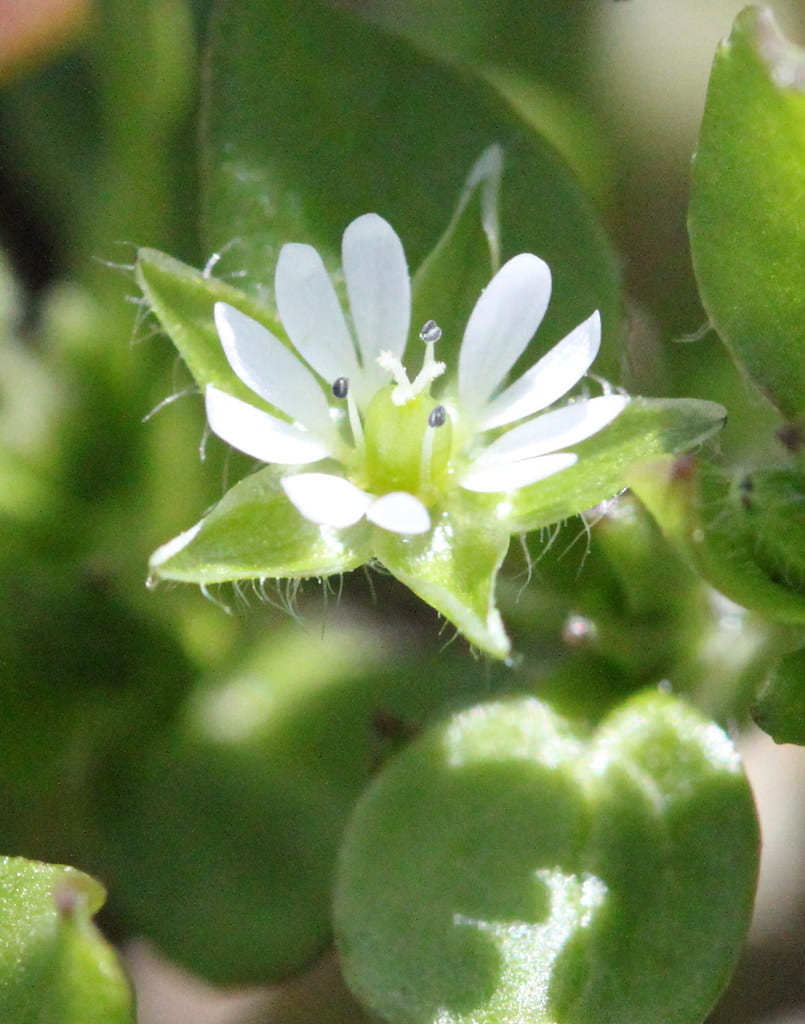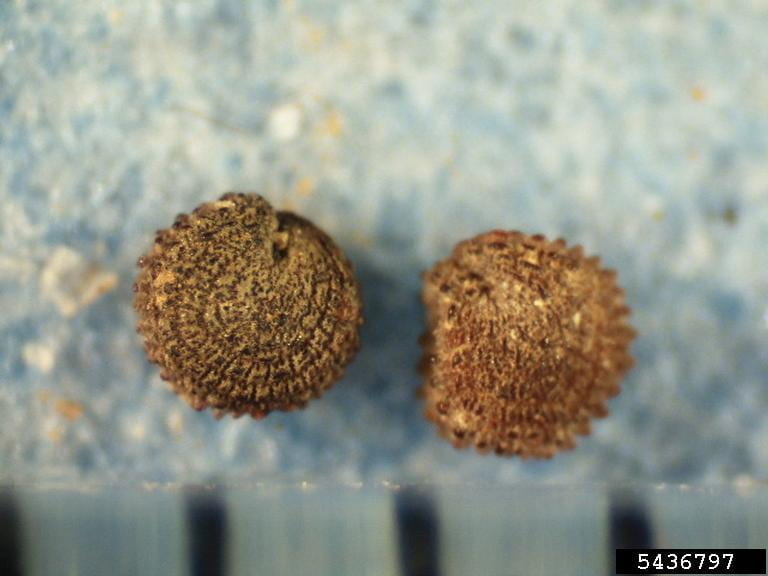Common Chickweed (Stellaria media) is winter annual weed that is widely distributed throughout the world. It is commonly found in overwintering field crops, hay fields, irrigated horticultural and agronomic crops, and nursery crops. Common chickweed is difficult to manage because it flowers continuously through the growing season and plant fragments readily reroot.
Identification
Seedlings: Seedlings have a slender stalk with sparse hairs and oval-shaped cotyledons. Young leaves are opposite and rounded to egg-shaped with a point at the end. The small stems that connects the leaf to the main stem (petioles) are approximately half the length of the leaf blade. Young plants begin to branch at the base after 5 leaf pairs have grown.
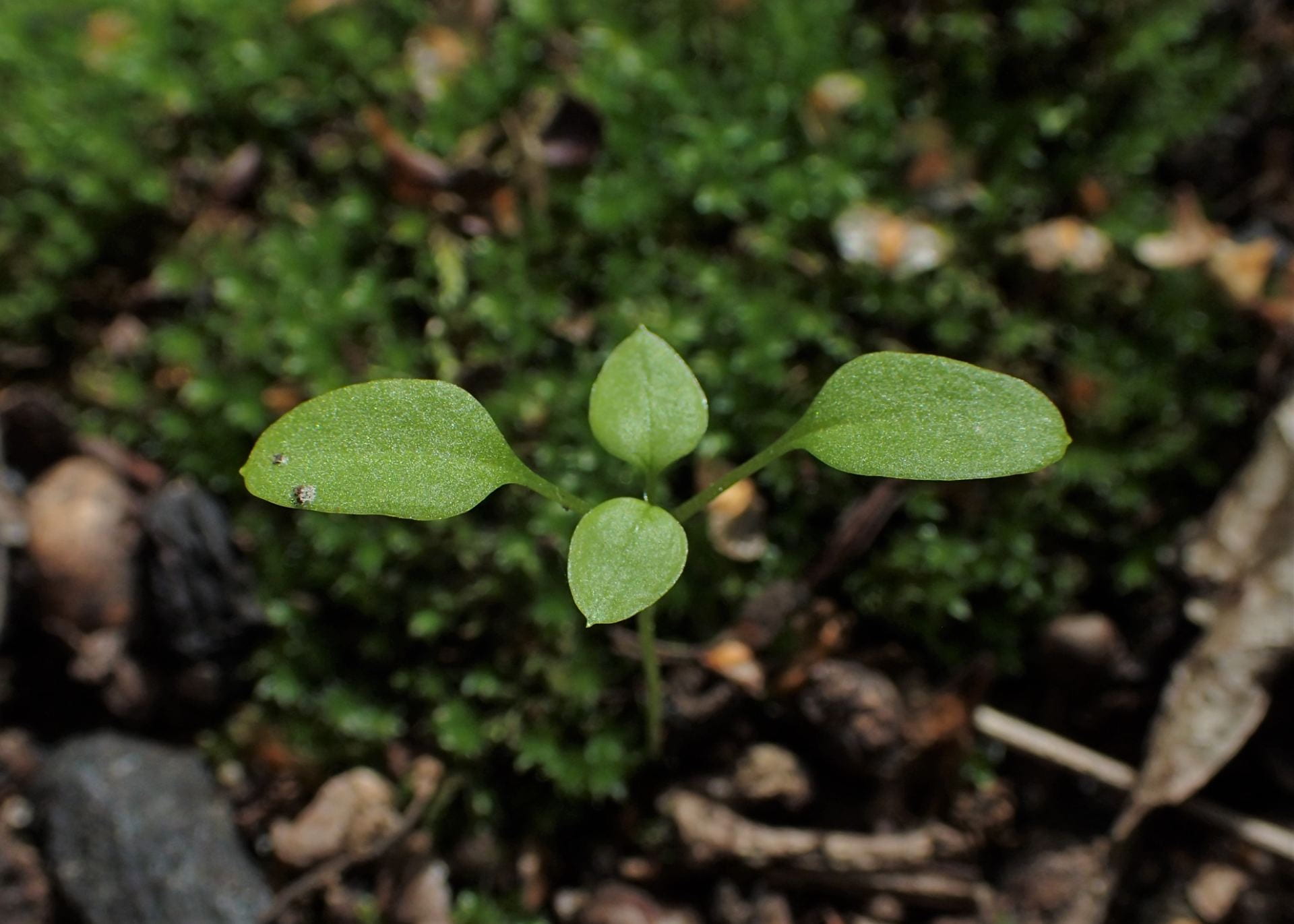
Common chickweed seedling
Photo by Krzysztof Ziarnek of Kenraiz via wikicommons
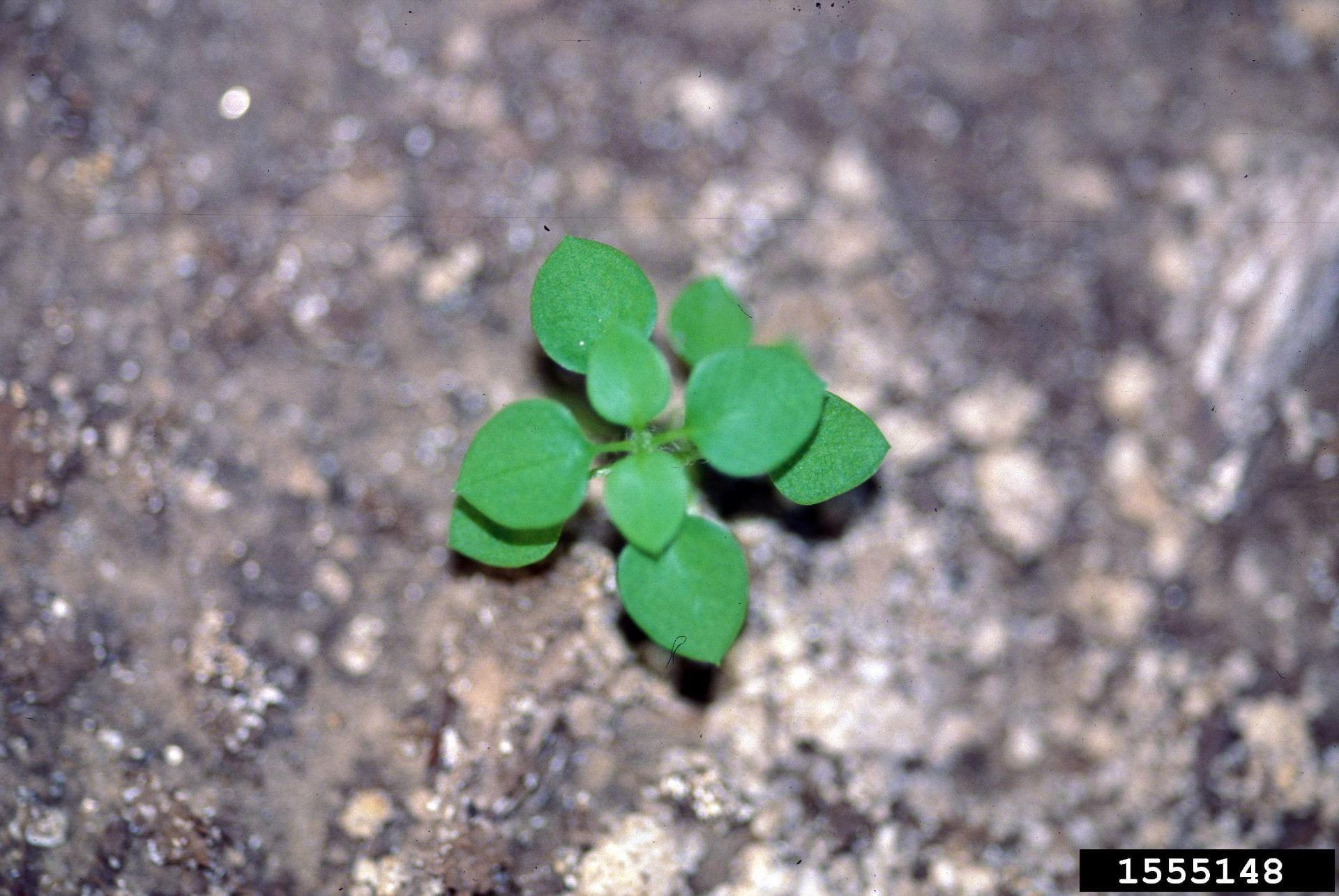
Common chickweed seedling
Photo by Ohio State University’s Weed Lab, via Bugwood.org
Mature plants: Stems of the mature plant lay close to the ground and are smooth except for 2 rows of hairs. Stems and leaves are light green; leaves are oval shaped with a distinctly pointed tip, and fold slightly at the midvein. Most leaves have hairy petioles, but some young upper leaves lack a petiole. Chickweed has a shallow, fibrous root system, and also roots readily wherever stems touch the ground. Plant fragments readily re-root, and the fragile stem detaches easily from the roots, allowing the plant to regrow after pulling.

Common chickweed stem leaf
Photo by Rebakah D Wallace of University of Georgia via Bugwood.org
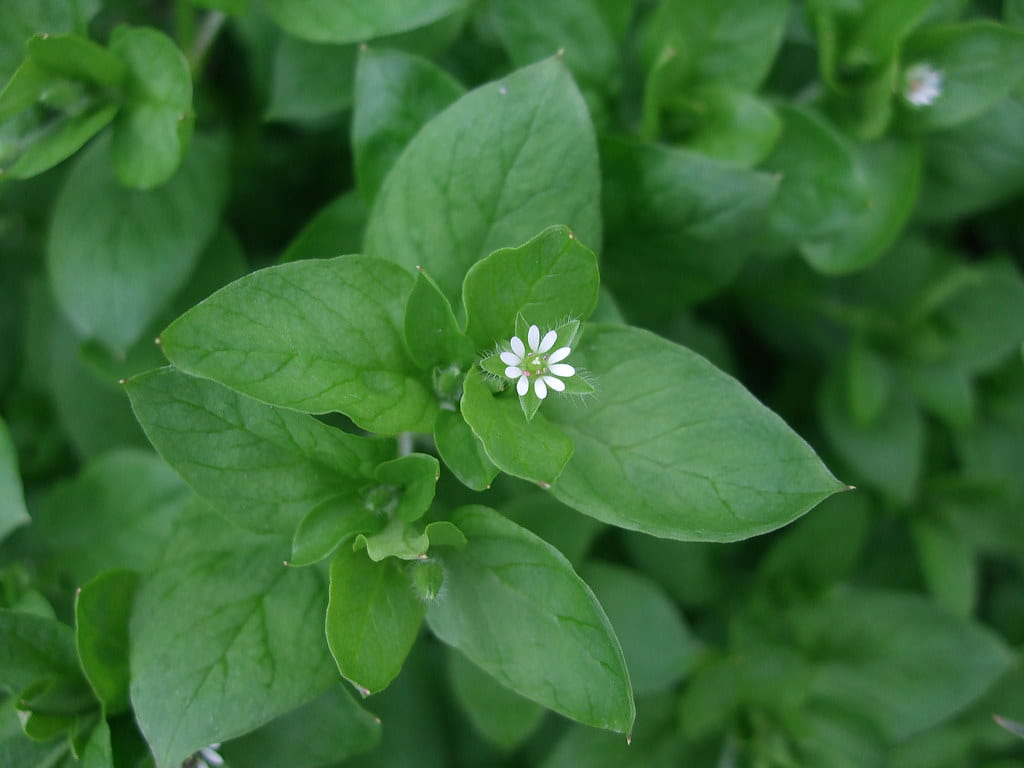
Mature Common Chickweed plant
photo via lawnhealth.co.uk
Flowers/Fruit: Mature chickweed plants flower continually, making seed bank management difficult. Flowers are white and very small (3-6mm, less than 1/4″ wide), and grow from leaf axils (where leaves emerge from the stem)near the top of the plant. 5 white petals are shorter than the 5 light green sepals, and the petal’s deep lobes give the appearance of 10 petals. Fruit are oval capsules, each containing 8-10 seeds.
Similar species: Mousear chickweed (Stellaria fontanum) is very similar to common chickweed, but its leaves lack the points of common chickweed and the entire plant is denesly hairy.
Mousear chickweed seedling
photo by Theodore Webster via USDA Agricultural Research Service, Bugwood.org
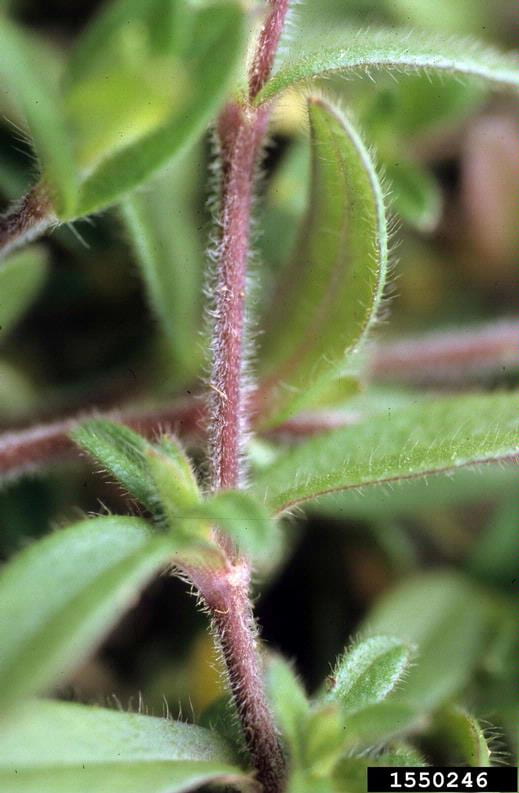
Mousear chickweed stems
photo by Theodore Webster via USDA Agricultural Research Service, Bugwood.org
Management
Chemical control
Cornell University’s Turfgrass and Landscape Weed ID app offers suggestions for conventional and alternative chemical control options.
Non-chemical control
Due to the common chickweed’s ability to grow and produce seeds during any season of the year, it is important to practice control methods throughout all crop rotation phases. Increased sowing density of winter and spring grain crops can help to reduce yield losses to common chickweed competition while reducing chickweed seed production. Tilling right after harvest terminates any chickweed remaining in the field, preventing it from continuing to set seed until frost.
Possible treatment methods include hand weeding, cultivation, mulches, and solarization. If done early, cultivation will effectively control growth, especially if the soil is dry and plants are small. On the other hand, cultivation when plants are large and soil is moist can actually spread rather than control chickweed weed through re-rooting plant fragments. Watch the soil surface for chickweed seedlings through late fall and winter, and remove them by shallow cultivation or hand pulling.
Adding at least two inches of organic mulch such as wood chips will decrease the number of seeds germinating. Mulch limits light and serves as a physical barrier. Common chickweed can emerge through loose straw, so plastic mulch or a paper barrier under straw is more effective than straw alone. Solarization with clear plastic mulch, another approach, heats the soil to temperatures that are intolerable to seeds and other pests.
Although there are currently no commercial biological control agents, ground beetles (carabids) do consume common chickweed seeds at the soil surface.
References
Uva R H, Neal J C, DiTomaso J M. 1997. Weeds of the Northeast. Book published by Cornell University, Ithaca NY. The go-to for weed ID in the Northeast; look for a new edition sometime in 2019.
Organic management suggestions are from Dr. Charles Mohler of Cornell University. Look for an upcoming book from Dr. Mohler on ecological management of weeds, from Cornell University Press.
Cornell University’s Turfgrass and Landscape Weed ID app. Identification and control options for weeds common to turf, agriculture, and gardens in New York; uses a very simple decision tree to identify your weed.
University of California Agriculture and Natural Resources’ Statewide Integrated Pest Management Program’s webpage for How to Manage Pests: Chickweeds.
Michigan State University’s Common Chickweed webpage from the Department of Plant, Soil, and Microbial Sciences.


